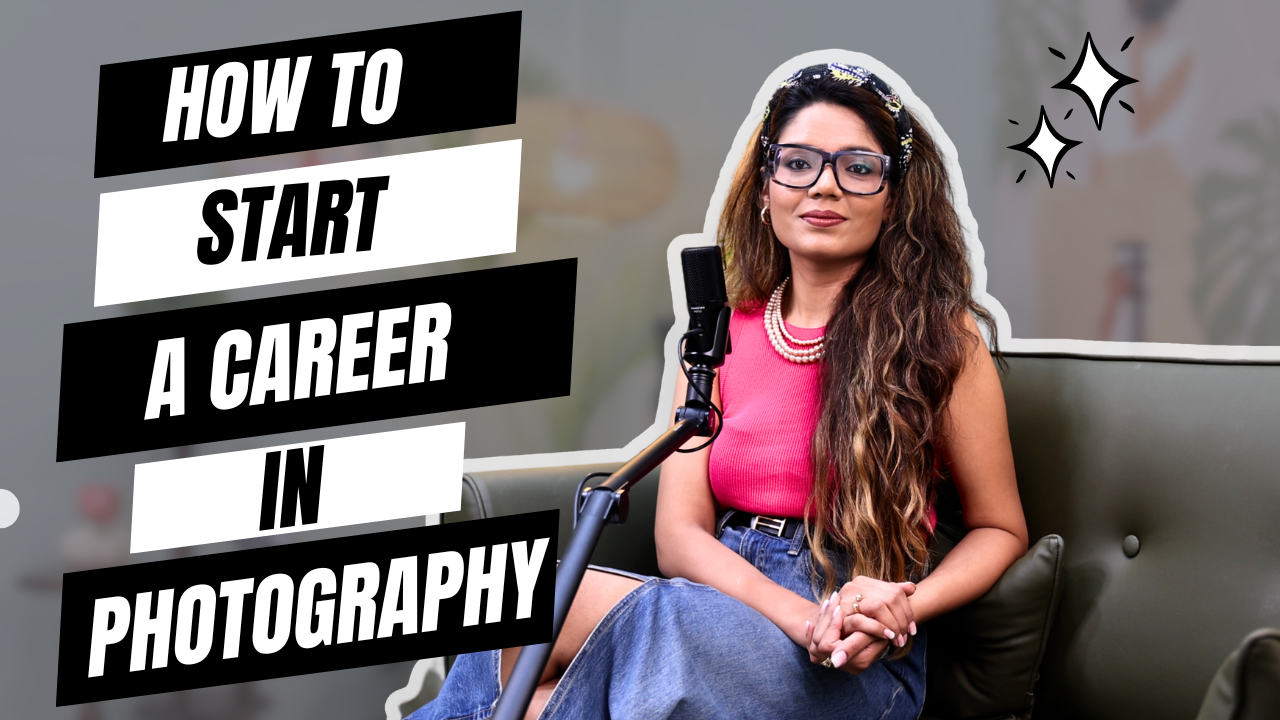how to make a career in photography

So, you’re someone interested in photography and want to turn it into a full-time career? Well, this blog is for you. In this post, I’ll be sharing my journey and the exact steps I took to establish myself as a professional photographer. From getting the basics right to building a solid portfolio and finally marketing yourself, these strategies helped me, and they can help you too
Introduction to My Journey:
Hey there! My name is Barkha Agarwal, and I am a maternity, newborn, and women’s portrait photographer based out of Gurugram, India. I have an educational background as an engineer and MBA, with 5 years of corporate experience. But eventually, I decided to turn my passion for photography into a full-time career. So, let’s dive into the steps that helped me transition into professional photography.
Step 1: Get Your Basics Right
There’s no shortcut around this. Learning the basics of your camera is fundamental to becoming a great photographer. A strong foundation is what differentiates a casual photographer from a professional. When I first started learning photography, I had a senior in college who taught me about how a professional DSLR works. He once said, “Shoot until your camera becomes an extension of your arm.”
Understanding exposure, ISO, aperture, shutter speed, and the exposure triangle is critical. What happens when you increase ISO? How do you handle fast-moving subjects? What if you’re shooting in low light? These basics will shape the foundation of your career and give you the technical expertise to create stunning images in any situation.
Step 2: Build Your Portfolio
Your portfolio is your gateway to professional success. When I was starting, I shot anything and everything I could – friends, family, pets, food, flowers, you name it! Take your camera with you everywhere and start practicing.
When I was doing my MBA, I clicked portfolio images for friends and shot events happening around the campus. There was even a time when I noticed a puddle of water near a palace, and I used the light reflection to create a low-angle shot. This experimentation is what builds your creative IQ. Don’t hesitate to shoot for free at the beginning, as it gives you the creative freedom to experiment and find your style without client constraints. But remember, this is just at the start.
Step 3: Build a Website and Social Media Presence
Having an online presence is non-negotiable in today’s world. You need a website, Instagram, and possibly a Facebook page to showcase your work. Your website serves as a portfolio and is often the first impression people have of you as a professional photographer.
I remember when I first started, I built my website on Wix within just 3 days. You don’t need a huge budget to start, either. There are so many template-based services like Wix, Squarespace, or even professionals you can hire via platforms like Fiverr to set up your website.
Your website and social media should reflect your work and your personality. Write your story—why you became a photographer, what drives you, and show behind-the-scenes content on Instagram. This creates a human connection that people can relate to.
step 4: Define Your Offerings
Now that you’ve built a portfolio and an online presence, it’s time to define what you’re offering. Having clear and well-defined packages shows professionalism and gives potential clients a reason to work with you.
When I began, I wrote down all the services I offered. For example, if you’re offering newborn photoshoots, you can have a package for $100, one for $300, and another for $500. List the deliverables, such as the session length, the number of outfit changes, or the time it will take to deliver edited images.
Having these clearly defined makes it easy for clients to know what they’re getting, and it ensures you are well-prepared to offer your services professionally.
Step 5: Market Yourself
Marketing doesn’t have to be complex. You are your own brand. Go to networking events, attend photography workshops, and connect with people. One of the things I did was offer to photograph women networking events in my area for free in exchange for promoting myself.
For example, I attended a women’s event organized by a friend, photographed it for free, and in return, got exposure to over 30 women entrepreneurs. Many of them are still following my work years later. Offering your services for free in the beginning helps build relationships and gives you the freedom to practice and build your style.
Conclusion
So, these were the 5 key steps that helped me become a professional photographer, and I hope they can help you too. Remember, the journey to success takes time, practice, and persistence. If I could turn my passion into a full-time profession, so can you!
For more content like this, make sure to subscribe to my YouTube channel, and feel free to leave a comment with any questions or topics you’d like me to cover in future videos.
By following these steps, you can lay the foundation for a successful career in photography. Whether you’re just starting or looking to level up, it’s all about getting the basics right, building a strong portfolio, defining your offerings, and marketing yourself the right way.
Good luck!
Barkha Agarwal





